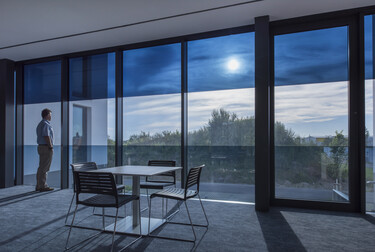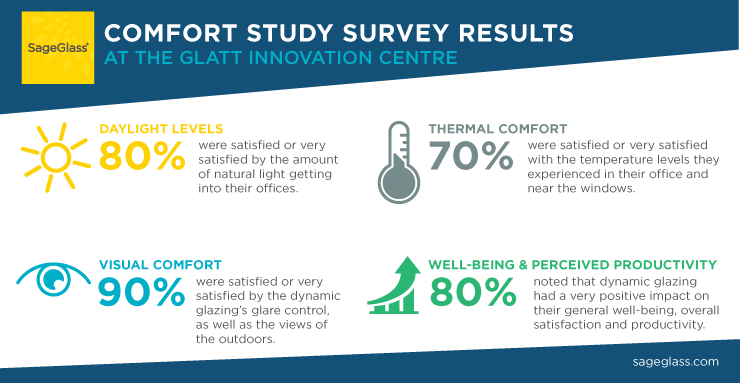Comfort Study at the Glatt Innovation Center

Last year, we conducted a comfort study at the Glatt Innovation Centre offices in Binzen, Germany, with the aim of gathering occupants’ experiences of dynamic glazing and their workspace. The main findings are described in the post below.
Why a comfort study?
Drawing on the field of sociology when designing buildings can improve occupant comfort. Although promoted by recent labels such as WELL or Osmoz, this approach is not in widespread use today. Yet using surveys or questionnaires to interview occupants of a space allows you to establish whether their expectations in terms of comfort, usage and so on have been satisfied, make them aware of the building’s impact on their health and well-being, and identify potential paths to improvement. It's an approach that I firmly believe in. It's an approach that can be instrumental to ensuring that technological innovations in buildings, such as dynamic glass, are widely used.
Methodology
The designers of the Glatt Innovation Centre aimed to achieve the best possible energy performance while improving occupants’ comfort at work, thanks to a permanent view of the outdoors. Was this aim achieved, and to what extent did the dynamic glazing contribute to this? We developed a comfort survey to answer these questions, based on existing surveys from scientific literature in the field, as well as the expertise of our sociologists at Saint-Gobain. The study evaluated visual and thermal comfort as well as general well-being and perceived productivity. The survey was sent to all team members affected, over a period of four weeks.
The following findings were among the most striking:
- 80% were satisfied or very satisfied with daylight levels in their space
- 70% were satisfied or very satisfied with their thermal comfort
- 90% were satisfied or very satisfied with visual comfort
- 80% of respondents noted that dynamic glazing positively impacted their well-being and productivity

Conclusion
The study's findings confirmed that dynamic glazing had a beneficial impact for the vast majority of occupants in terms of managing light and heat levels, thus improving their visual and thermal comfort. Potential enhancements, such as improvements to the automatic glass control to suit individual preferences, were also identified. Furthermore, some of the opinions gathered revealed potential levers for improving other aspects of comfort, such as the quality of air and acoustics.